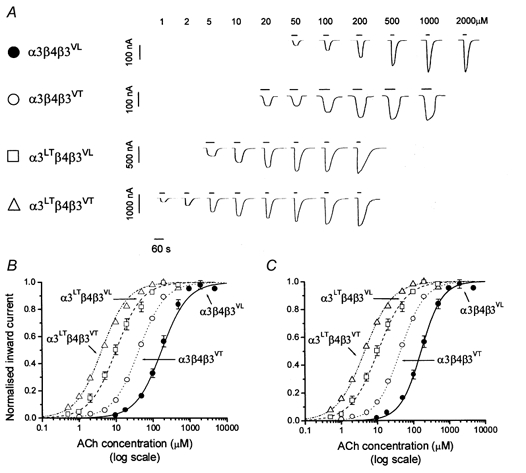Figure 2. Agonist sensitivity of ‘triplet’α3β4β3 nicotinic receptors containing 9′ Thr mutations in α3 and/or β3.

A, examples of inward currents elicited by a representative range of ACh concentrations (see values above the application bars) in oocytes expressing α3β4β3VL, α3β4β3VT, α3LTβ4β3VL or α3LTβ4β3VT. ACh was bath-applied to oocytes clamped to a holding potential of -70 mV. B and C show ACh concentration-response curves pooled from experiments such as the ones shown in A (n = 4-10 oocytes): each response was normalised to the maximum current evoked by ACh in that oocyte (see Methods). Pooled normalised results were fitted with the Hill equation either as a free fit (C) or under the constraint of equal slopes (B) in order to estimate the horizontal distance between the curves as a dose ratio (see Table 1). The concentration-response curves shown refer to oocytes injected with α3β4β3VL (•), α3β4β3VT (○), α3LTβ4β3VL (□) and α3LTβ4β3VT (▵); bars show standard deviation of the mean (when larger than the symbol). Note the progressive increase in the potency of ACh as the 9′ Thr mutation was introduced in β3, α3 alone or α3 and β3.
